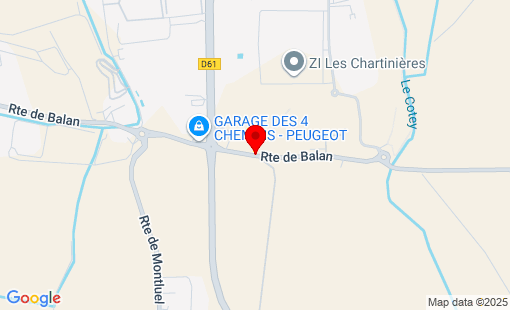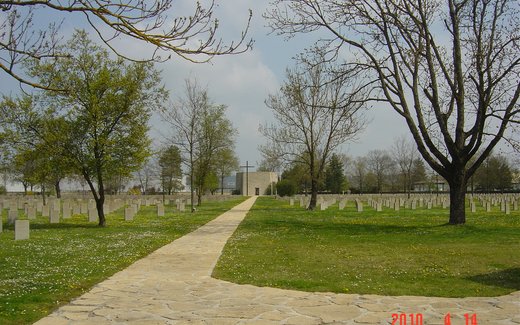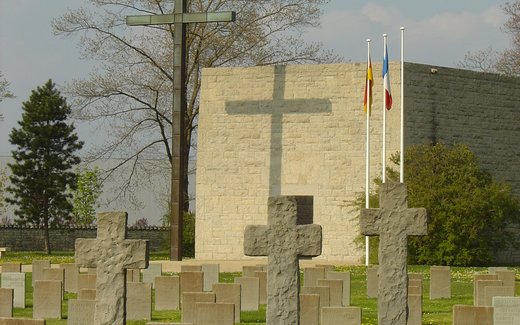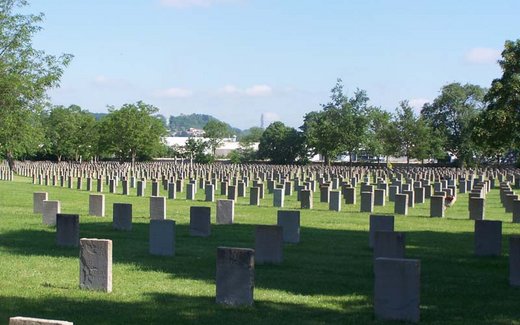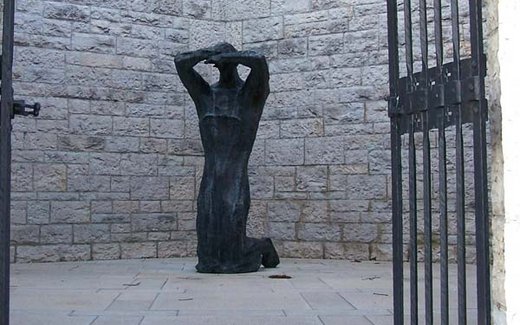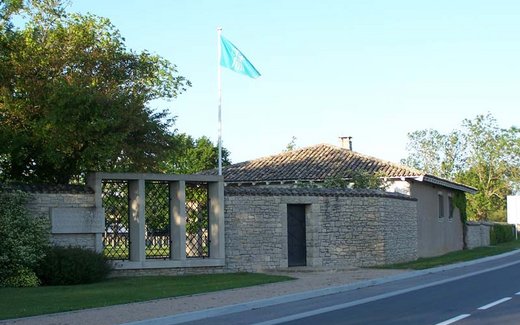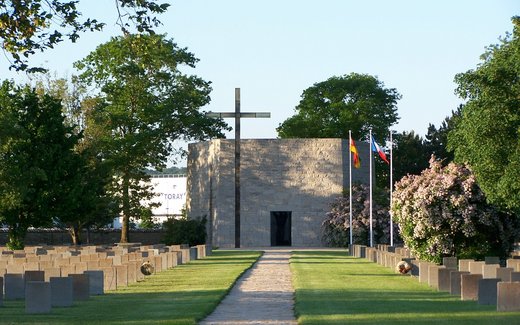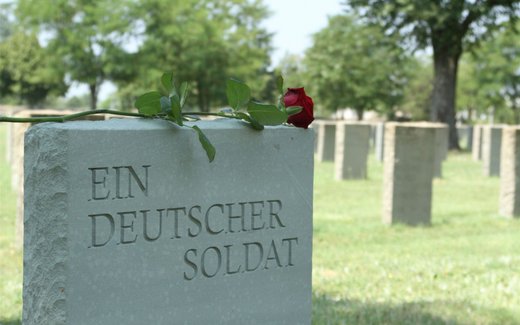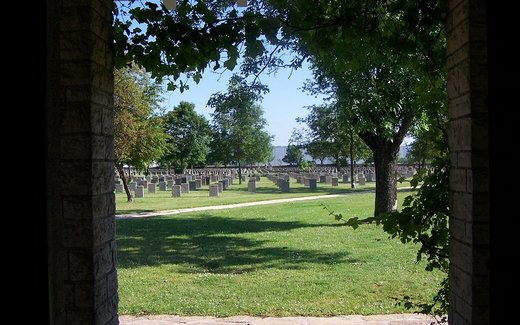The Dagneux military cemetery is the resting place for almost 20,000 German soldiers
Soldiers, most of whom died in the south of France during the Second World War
in the south of France.
Cemetery description
The German war cemetery is located in Dagneux, a commune in the
Département Ain, about 16 kilometers east of Lyon. Through a narrow
Entrance gate you enter the 4.5-hectare cemetery grounds. In the
The entrance building houses the visitors' room, where the lists of names of the
of the buried fallen are on display.
The cemetery consists of 42 blocks of different sizes. The grave locations are
marked by steles. They bear the names on the front and back,
Ranks and the dates of birth and death of two fallen soldiers each. Individual
Groups of crosses interrupt the uniform rows of grave steles.
The central path leads diagonally through the cemetery to the memorial, a pentagonal
pentagonal, eight-metre-high, windowless building with an open interior
Open interior. The large bronze figure of a mourner stands there. To the side of it
an eleven-meter-high cross rises up to the side. Beneath the memorial is the
The comrades' grave with more than 800 dead, of whom more than 350 are unknown.
The names of the known soldiers were carved into nine square limestone slabs
carved into the floor of the memorial.
Burial
The Dagneux military cemetery is home to almost 20,000 German soldiers who died
mainly died in battles in the south of France and in captivity
in captivity.
History
After the Allies landed on the French Riviera on August 15, 1944
they took the cities of Grenoble, Toulon, Marseille and Toulon within a few weeks,
Toulon, Marseille and finally Lyon on September 3.
in 1952, the French authorities set up a fortress about two kilometers south of the two
dagneux and Montluel and buried 1,486 German casualties there
initially buried 1,486 German casualties and prisoners of war there.
They had originally been buried in civilian cemeteries in the south of France
mainly in Lyon, Aix-les-Bains, Thonon-les-Bains, Bourg-en-Bresse and Bélignieux
and Bélignieux.
After the conclusion of the war graves agreement between the Federal Republic of
Germany and France in 1954, four years later, cooperation also began in the
in the south of France four years later. The French government
the French government made the previous provisional site available for expansion into a
german military cemetery and also took into account the additional space
the additional space required. In the summer of 1961, the
Reburial work was completed. The dead who were reburied came from the following
Departments: Ain, Allier, Alpes-Maritimes, Ardèche, Ariège, Aude, Aveyron,
Basses-Alpes, Bouches-du-Rhône, Cher, Drôme, Gard, Hautes-Alpes, Haute-Garonne,
Haute-Loire, Haute-Savoi, Hérault, Isère, Loire, Lozère, Puy-de-Dôme, Pyrénées-
Orientales, Rhône, Savoie, Tarn, Var and Vaucluse.
